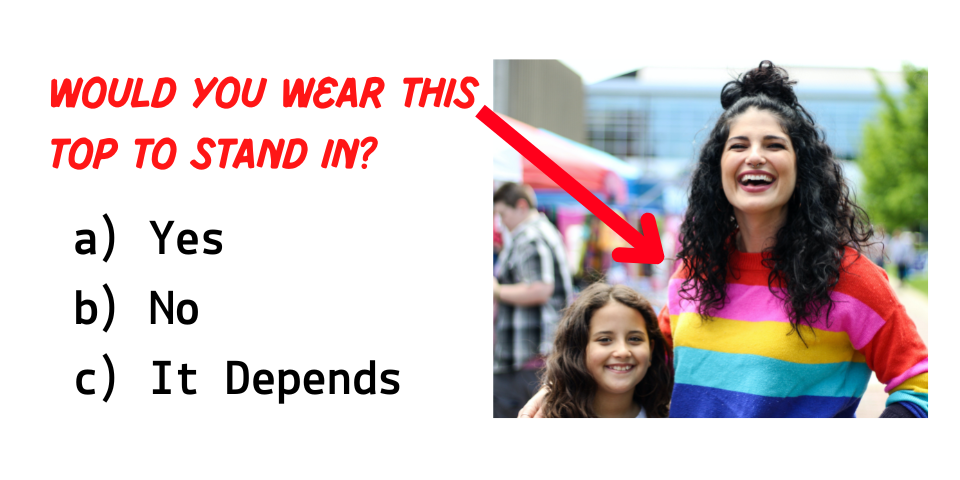When you’re called to stand in on a production, when you get your details for the day of work, there may be some instructions for you on what to wear.
And when it comes to what you wear, one thing you may be told is to wear “neutral colors.”
You may then ask yourself, “What are ‘neutral colors’?”
Let’s dig a little deeper!
Patterns & Colors
When it comes to most stand-in work, you generally want to stay away from wearing certain kinds of patterns and colors.
First off, you want to stay away from busy patterns. You will have a lot of focus on you when you are being used as a stand-in, and busy patterns may be distracting from lighting and setting up the shot.
You also want to stay away from tight stripes. Tight stripes can cause a “strobing” effect on camera, which is distracting. Here’s how an article from Forbes describes it:
If you look for advice on what to wear for a television appearance, you can find a wide range of information from a variety of sources, but they all agree on one thing: Solid colors are Good, and small stripes are Bad. The reason for this has to do with the technology of television: the rastering process by which an image is reduced into pixels for transmission naturally results in a pattern of rows and columns, and if there’s a mismatch between those, you generate a shifting “moiré pattern” that’s exceedingly distracting to viewers.
Now that basically means you generally want to avoid any kind of pattern in what you wear to stand-in work, and instead stick to solid colors.
Solids
But there are certain colors you generally want to avoid.
Colors to avoid when working as a stand-in generally are bright colors. That could mean anything from white (you could glow on camera), to fluorescent colors (generally distracting), to primary and secondary colors like red and bright orange.
When it comes to stand-in colors, you want to choose more neutral colors than bright colors.
That can mean a number of colors, but it tends to mean to stick to black, dark gray, navy blue, brown, and other darker colors when choosing what colors to wear to stand-in work.
Exceptions
Wearing these neutral colors is not a hard-and-fast rule; it’s a general principle for success on most stand-in jobs.
Of course, this principle does not apply if you’ve been told to wear a certain color to work that is not one of these neutral colors!
Keep in Mind
When it comes to choosing what to wear to stand-in work, also consider the weather.
If the weather it cold, we’d recommend dressing for warmth over caring about the color.
If the weather is hot, it may make more sense to care about color.
If you know what color(s) your actor will be wearing that day, maybe consider wearing a similar color. We don’t recommend bringing a huge suitcase of options (especially if you’re a union stand-in, because a production arguably should pay you to do so).
Also, the most important consideration is your top. Clothing on your lower half may matter, but on most jobs, what will probably matter more are your tops.
All in all, do your best. If you end up not having a color requested, just show up to work in as neutral colors as you have, and if production wants you in a different color, they may provide you with “color cover” to wear over what you’re wearing to better serve their needs.
Do you find you need neutral colors on most stand-in jobs? Do you have other color tips for stand-ins? Post your thoughts in the comments below!







Leave A Comment